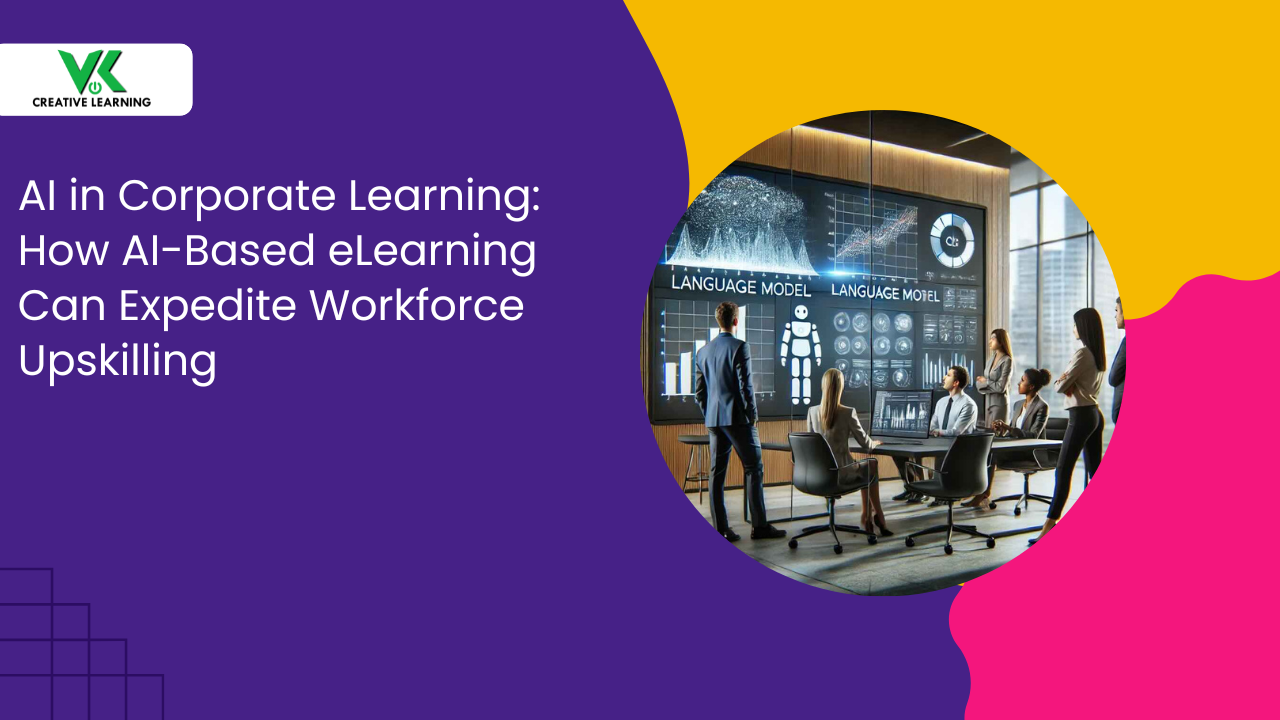A Glimpse at Different Types of eLearning Solutions
March 01, 2022
eLearning is becoming increasingly popular due to its flexibility and cost-saving features as well as its ability to deliver excellent training outcomes. According to recent data, a well-designed "eLearning program" may result in information retention rates of up to 25%-60%.
Why eLearning and how does it help?
eLearning is simply the use of technology to link professors and students who are geographically separated by thousands of kilometers. The eLearning training may be conducted in a variety of ways. These formerly included mainframe LMS (Learning Management System), floppy diskettes, multimedia CD-ROMs, and interactive videodiscs. Recently, Web technology has been deployed (both for Internet and intranet distribution). In the future, instructions will be given through PDAs and mobile phones. This novel approach to education is referred to as mLearning or mobile learning.
It is particularly beneficial for enterprises in various locations. The eLearning training solution links employees in all places, at all times, to deliver a uniform set of instructions. This way, e-Learning to facilitate 'enterprise transformation' and increase ROI. For instance, CEOs can develop new skills or strengthen existing skill sets, which they can utilize in the everyday workplace. These firms use the additional money earned or the ROI as a metric for assessing the effectiveness of e-Learning.
Types of eLearning
Let's examine the various types of "eLearning solutions" that a typical business utilizes to train its employees.
Online / digital eLearning course
Simple online or digital eLearning courses are often offered as slides with text and images (video, audio, and pictures). With the help of modern eLearning authoring tools, you may add variety to your presentations by including questionnaires, simulations, and screencasts. The trick here is to ensure that the learning experience is memorable and easy. Content is usually split in an eLearning course as follows for effective memory retention: 60% video/simulated content and 40% text is recommended. There are two primary forms of digital e-Learning: synchronous and asynchronous.
Synchronous eLearning training - Training that occurs in real-time
Synchronous, which means "at the same time," refers to individuals interacting with an instructor in real-time through the Web. For instance, virtual classrooms are nothing more than online versions of physical classrooms. Participants communicate with one another and with instructors using instant messaging, chat, voice and video conferences, and more. Additionally, all sessions may be recorded and replayed. Its advantages include the following:
— Capability to record and monitor educational activities.
— It is feasible to conduct continuous monitoring and rectification.
— Possibilities for worldwide networking and opportunities for cooperation among students.
— The ability to tailor instruction to the specific needs of each student.
Asynchronous training - Training that occurs at different times
Asynchronous, which means "not concurrently," allows learners to undertake the WBT (Web-based training) at their own leisure time, without having to communicate live with the instructor. Essentially, it is self-help material that is available 24 hours a day.
The benefit of this kind of e-Learning is that it provides learners with the knowledge they need whenever they want it. Additionally, it facilitates participant interaction through bulletin boards, message boards, and discussion forums. These include computer-based training modules on CD-Roms, Web-based training modules accessible through an intranet (WBTs), and well-written articles and other write-ups. The benefits include the following: -
· Available ‘at the moment of need' for immediate learning and reference.
· Access from anywhere and at any time.
· Capability to communicate with many employees concurrently.
· Content consistency and a one-time creation cost.
Blended learning
A new kind of education called blended learning is gaining traction. As the name implies, it is a blend of synchronous and asynchronous ways of learning. Virtual classrooms and self-study CDs and study materials are now widely used to facilitate this form of eLearning training.
Video-based eLearning solution
Visually engaging education is made possible via "video-based eLearning courses." This approach is enjoyable and adaptable to any subject; you only need to decide how you want to convey it. A video course can be made interactive with pop-up questions and game features, or it can be a straightforward educational movie. Video content uses this straightforward and appealing format to explain concepts as well as to make learning effective.
Customized E-Learning solutions.
Custom e-learning is a novel and revolutionary approach to e-learning that enables the customization of learning materials to meet the unique needs of each student. Customizable e-learning solutions enable education to become more personalized and student-centered by taking into account a variety of aspects such as student performance, objectives, competencies, skills, and traits.
Online Interactive Education.
An interactive e-learning course is based on a simulation type of learning that enables learners to understand by interacting with the eLearning solution platform. For example, there may be an interactive chapter based on a certain topic. The learners may have to give an appropriate answer to the question asked by the eLearning solution at the end of the chapter.
Teachers and students may modify their teaching and learning techniques based on the indicators received through the eLearning solution. As a result, interactive e-learning is much more popular than linear e-learning, as it enables professors to set up chapter explanations based on the learning style of the learners.
Virtual Reality Simulations. Perhaps the most successful kind of eLearning is via a virtual reality program. They immerse the user in a virtual environment, allowing for safe trial and error. This enables an in-depth understanding of the concepts.
Online Collaborative Learning.
Collaborative e-learning is a relatively new technique of learning in which numerous students work together to accomplish their learning goals. Students must collaborate and exercise collaboration in order to accomplish their shared educational goals.
This has been accomplished via. the development of successful groups, in which each student is required to consider the strengths and shortcomings of their peers. This enhances the learners' communication and collaboration ability. Collaborative e-learning builds on the notion that knowledge is best created within a group of people who can interact and learn from one another.
Knowledge management
It is rather normal for employees to possess a range of abilities and expertise. Generally, senior employees who have been on the job for an extended period of time are more knowledgeable than fresher employees.
As a company owner, you may be interested in protecting the institutional knowledge that your senior employees possess and sharing it with your younger employees. An eLearning course can be fed with the knowledge of a person on specialized and soft skills and conduct might help you overcome this obstacle. This is particularly advantageous for duties that remain relatively constant over time since it enables you to reuse old courses for extended periods of time without having to invest time and money in developing new training materials.
Quizzes.
As with conventional school assessments, digital quizzes assist in determining how much an employee has retained from a lecture. Today's "eLearning solution" technologies enable you to construct engaging and dynamic examinations that include branching scenarios, video, and audio questions, and drag-and-drop features.
Are you looking out for an eLearning solution that encompasses the above types of eLearning features? Then, you contact VK Creative Learning, which has more than 10 years of experience in creating various types of eLearning courseware.




